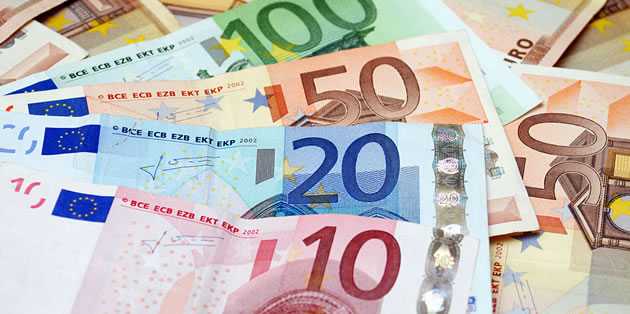The Euro to US Dollar (EUR/USD) exchange rate eased from earlier highs on Thursday afternoon as the US currency continued to receive support from expectations that the Federal Reserve will raise interest rates this year.
The Euro to US Dollar (EUR/USD) exchange rate touched a session low of 1.0866
Earlier in the session, the Euro had been supported against the US Dollar and several other major peers as GDP data out of Spain and sentiment data out of the wider Eurozone came in positively. The currency also received some support from claims by the Greek government that a deal will be reached with its creditors by Sunday. Eurozone officials dismissed the optimism however.
‘The Greek team is in Brussels with the aim of concluding the deal within the coming days. We are coming to these negotiations with the aim to have a deal with the partners by Sunday. Certainly, statements that do not share the optimism of the Greek government fall into the broader framework of negotiations and are possibly pressure on the Greek side to make more concessions,’ said Greek official Gabriel Sakellaridis.
As the session progressed investors began to doubt the sense of optimism as the European Central Bank (ECB) warned its latest financial stability review that the risk of a Greek default has ‘increased sharply’.
Ukraine Worries Weigh on Euro
The Euro also came under pressure after Reuters reported that Russia is massing troops and hundreds of tanks, artillery and rocket launchers near the border of Ukraine.
The vehicles and soldiers were said to have their insignia’s removed. The report-raised concerns that pro-Russian separatists are preparing to launch a full-scale assault in the summer.
US Jobless Claims Data Suggests Labour Market Strength
The US Dollar made gains against the Euro and Pound Sterling (GBP) after data showed that the number of Americans filing for unemployment benefits rose unexpectedly last week. Despite the rise, the levels were consistent with a strengthening labour market.
According to the Washington based Department of Labour, the number of American filing for initial unemployment benefits increased by 7,000 to 282,000 in the week ending May 23. Economists had been expecting the number of claimants to have fallen by 5,000 to 270,000. A figure below 300,000 is seen as a positive by economists.
The four-week moving average of continuing claims declined 70,250 between the April and May survey periods, suggesting a dip in the jobless rate from a near seven-year low of 5.4% last month.



